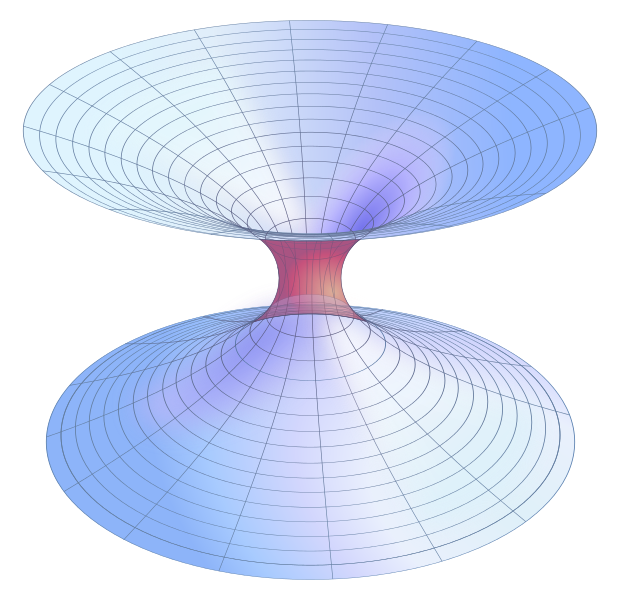Usage
Transport
The DSM drive technology is mainly use for interstellar travel applications. Utilizing a reserve of exotic particles and consuming large amounts of power, a DSM drive will use two or more linear accelerators to collide said exotic particles in front of the ship. The collision between these particles is powerful enough to generate a singularity, which opens up a wormhole with pre-defined characteristics. While an exact destination cannot be determined, a rough idea of it can be calculated and reached by using varying amounts of power and fuel, resulting in a wide range of flexibility for even the simplest drives. Unfortunately, these singularities are very prone to grow unstable when nearing gravity wells, including those of space ships. This is one of the reasons behind the limited sizes of vessels today, and the emplacement of the numerous trade stations found throughout Elysium.
Communications
Another use for DSM drive technology is for interstellar communications. Since the DSM singularities can transport both physical matter and energy, simple electromagnetic waves can also be transmitted instantly. As these applications do not require the large singularities of spaceships, these DSM "transmitters" are significantly smaller and easier to maintain, and are actually among the cheapest and safest form of DSM technology. In addition to their reduced size and efficiency, the DSM transmitters can also have a significantly longer range than traditional DSM drives, providing an outstanding range to dedicated communication outposts and stations. The stability issues of the singularities can also be much more easily countered at such a scale, permitting the use of such applications on small planets and other astronomical bodies. As a result, numerous communication stations and outposts provide an interconnected network encompassing the entirety of Elysium's settled territory.
History
The Dawson-Sirenko-Mayer Experiment
With Humanity growing more and more desperate for a scientific solution, an independent commission was tasked to investigate a mysterious disaster that occurred at the Deimos Particle Accelerator facility. Their findings eventually led to the discovery of the Dawson-Sirenko-Mayer particles, which in turn led to the creation of an experimental FTL technology that finally opened the door to interstellar travel. Officially named the Dawson-Sirenko-Mayer singularity generator, this innovative use of linear particle accelerators offered promises of instantaneous travel through artificial traversable wormholes. With the first successful prototypes completed and tested between 2111 and 2118 by major companies and national organizations alike, the DSM drive became the seed to humanity's last hope. Now ready to take their destiny in their own hands, the United Nations launched in the following year the Odyssey Initiative, a vast program whose aim would be the eventual evacuation of humanity towards Alpha Centauri.
The principle behind DSM technology was actually discovered by accident on Earth, during the end of the 21st century. At the time, professors Philip Dawson, Lukas Sirenko and Benjamin Mayer were in charge of investigating the sudden destruction of a Martian particle accelerator. The result of this investigation were the Dawson-Sirenko-Mayer singularities, and eventually, the means to artificially create them. While the first prototypes were successful, these early implementations proved to be far too inefficient for industrial use, as the Ulysses proved during its maiden flight.
It wouldn't be until the end of the 1st century After Planetfall that research on DSM singularities resumed. With their knowledge perfected by the introduction of Takenium, Vestan scientists eventually developed a safer method to generate DSM singularities, leading to the first successful interstellar vessels launched in the early 120s. Since then, research into DSM singularities continued to improve these early drives, progressively increasing their range and reducing their power requirements. This resulted in a wider adoption of the technology, previously reserved for governments and other organizations capable of funding such marvels of engineering.
The usage of DSM drives took a major turn with the colonization of Ceryx, as a new fleet of colony ships and freighters was required to support the growing population. This further increased the demand for better and cheaper drives, eventually leading to the current market that we know today. Many types of drives are available, depending on the characteristics required such as range, durability or fuel efficiency. Military drives remain, of course, among the best available on the market, but some top-of-the-line civilian models manage to surpass those of the military, fetching a very high price in the process.






Comments